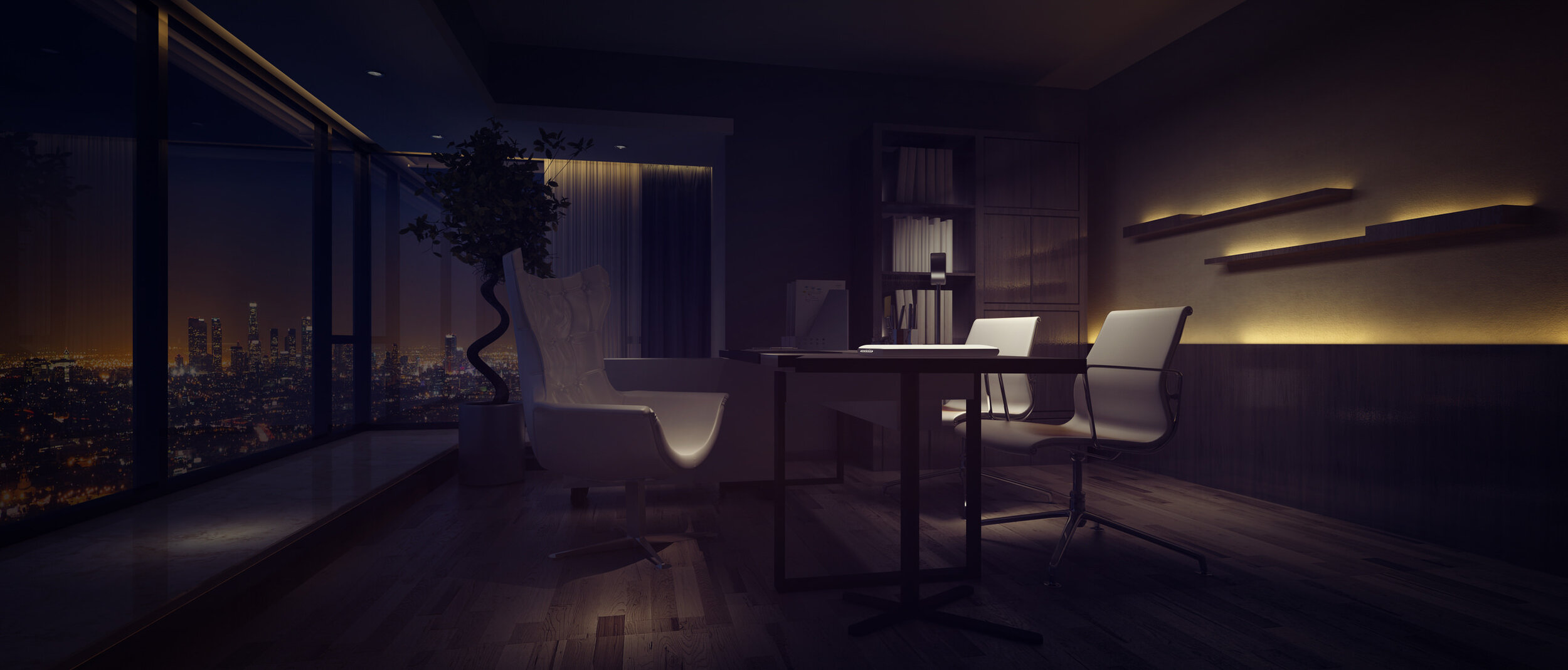How To Create Atmosphere & Ambience In Your Space With LED Strip
A new approach to creating ambience: the LED strip
Not since the fluorescent tube came on to the market in 1903 has there been a lighting source so different that it provides new opportunities to infuse atmosphere into any space, creating anything from a calm oasis to a vibrant entertainment area. Additionally, with LED strip, you can change the ambience as required. It’s sometime a little confusing to understand how LED works and what all the terminology means, so we’ve put together some information to help you get your head around LED lighting.
Conventional lighting or LED strip?
Conventional lighting requires fittings, such as lamp holders and globes, positioned in the space to provide light and ambience. In most circumstances, they are visible and have therefore become a design focal point. Chandeliers, bare bulb pendants, shades and more have become an intrinsic part of the design process as much for their physical appearance as for the light they produce.
LED strip, sometimes called LED tape, is for the most part hidden from view. This means only the light it produces is visible. It can also be placed in areas not normally available to conventional lighting such as under cabinets, shelves, or even in a bathroom shower niche.
Modern architecture
For modern contemporary designs, LED strip can replace most of the traditional lighting technology if desired. Therefore, it does not interfere with the open and minimalist feel of the architecture. With a simple backdrop and open spaces, LED strip can create ambience ranging from the subdued calm of a warm white to dramatic colourful displays, and all from the same light source. This allows you to change the look and feel of a room with the touch of a button. Who needs to worry about paint colour when you have 16 million colours to choose from?
LED strip can complement conventional lighting styles
So, what about older style homes, or new homes with conventional lighting? Well, the good news is LED strip can complement your existing lighting without changing the look and feel of your decor. If done well, it will be out of sight until it’s turned on. Modern LEDs can create traditional warm tones, perfect for helping to create the ideal cosy space.
Out of sight
The trick to using LED strip is to avoid the LEDs themselves from being visible. The reason for this is the tape itself is not very visually appealing. Another reason is you will see the individual LED’s point light and they can dazzle the eyes when at full brightness. LED strip is therefore positioned to create a light-wash effect on wall or ceilings, under bench kickboards, or under kitchen cabinets. For ceilings and walls, this could mean in a bulkhead or specially designed coving. Where it is not possible to hide the strip, aluminium extrusion with a translucent cover can be used to diffuse the point light and provide protection from touching or accidental bumps.
Colour choice
There are a variety of LED strip colours available including single solid colours, multi-colour, single white, in various colour temperatures, and white with an adjustable colour temperature. There are also combinations of multi-colour and white.
The choice of LED strip is mostly about options. You can choose from simple to complex depending on your desires and budget. For example, a contemporary space, where you are more likely to have a neutral colour scheme, you may choose multi-colour + white strip as it will give you a huge colour palette. Whereas in a Victorian period house with strong paint colours, you may use a warm white only. You may also consider cool white in a kitchen to view the true colours of the food you are cooking, then create a warm atmosphere when it’s time to settle down, relax, and eat. In this case, an adjustable colour temperature LED strip would be a good choice.
Brightness
Brightness is measured in lumens. The more lumens, the brighter the strip is. Brightness can also be affected by the colour of your walls and whether you use an aluminium profile with a diffuser. The number of LEDs per metre is probably the most influential factor of lumen output. There is also a correlation between lumen output and the power required, measured in watts per metre. The type of LED (white or colour etc.) also plays a part.
Low lumen LED strip is great for feature lighting and normally does not require dimming. It uses the least amount of power, is very cool to the touch, and is the most cost-effective to implement. Higher brightness LED strip can be used to replace traditional lighting as well as being employed as feature lighting. It will consume more power per metre and may require dimming.
Dimming and controlling the light
The variety of LED strip styles, whether it be single or multi-colour, require a corresponding control solution. Single colour strip can be powered directly by an LED driver, and optionally dimmed via a control device. It is the simplest style to implement. Multi-coloured and combined strip requires their own corresponding control devices.
There are wall mounted controllers and remote-control devices available. Both wall mounted, and remote controllers are wireless (RF) to negate extra wiring and simplify installation. And, unlike a TV remote, RF does not require line-of-sight to work. On some controllers, there is the ability to create and save your favorite settings for quick retrieval. You can also control separate areas, called zones, from one or more controllers. Some of our Wood Beam LED Pendant Lights incorporate wireless RF dimming - find out more here.
Installing LED strip
The other great thing about the LED strip system is that it is low voltage, typically 12 Volts or 24 Volts. This means it can be installed by anyone. There are, however, still some guidelines to follow to ensure your LEDs work safely and correctly. You will also need a mains-connected (240VAC) power source at various points, so that may require an electrician. Electricians can also fully install and set up the lights for you.
We hope this sheds a little ‘light’ on LED lighting for you, if you have any questions, don’t hesitate to contact us.



